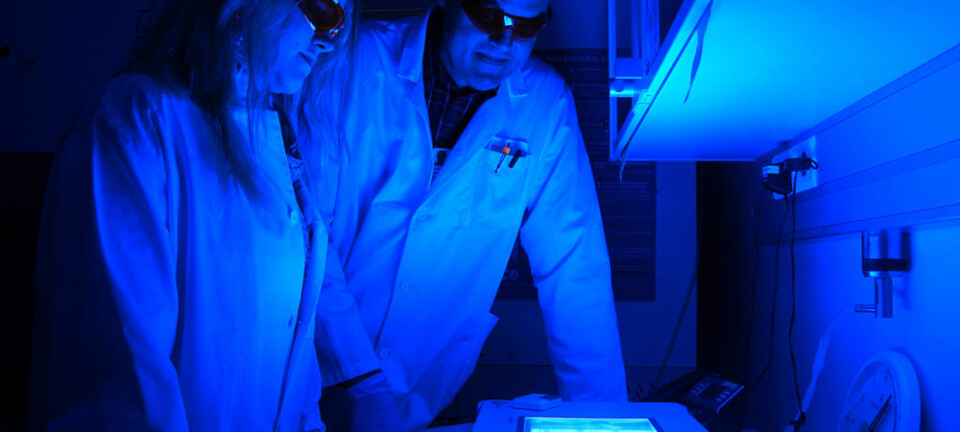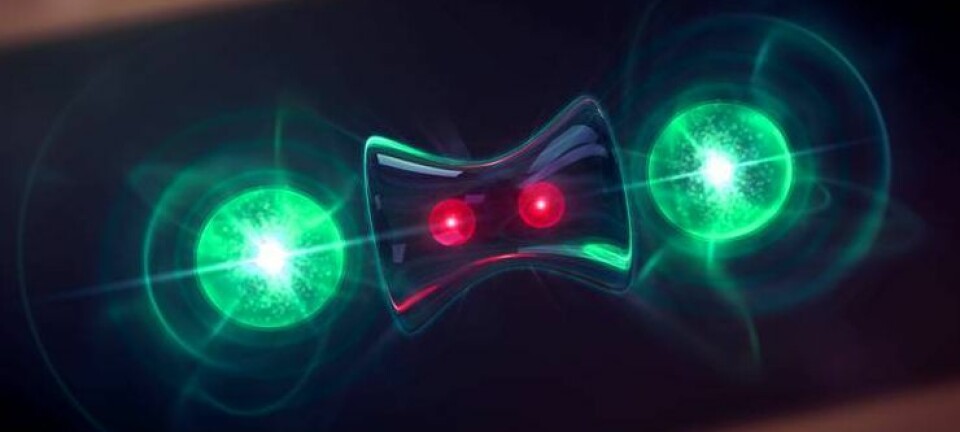
Danish physicist stores light, moves it around, and makes it reappear
Renowned physicist Lene Hau does not only know how to stop light, but also manipulate it and save it’s imprints for later use.
In 1999 the Danish physicist Lene Hau managed to slow down the fastest thing we know: light.
Since then she has continued her work with light at Harvard University.
In her latest experiment, she not only stopped the light but also moved it around, manipulating it for half a minute, before she made it reappear.
”We can hold on to the light, move it around or even save it for later. We can actually manipulate it, “ says Hau in an interview with ScienceNordic after her talk at the annual Hans Christian Andersen (HCA) lecture at The University of Southern Denmark.
The speed of light takes on new meaning
It may sound incredible that light, which usually moves at 300,000 kilometers per second, can be stopped and packed away for a rainy day.
After many years of research and experiments with lasers, cooled atoms, and other instruments and techniques it has become possible to control light.
In the laboratory Hau used Bose–Einstein condensation. This means cooling down atoms in a gasseous state to extremely low temperatures near the absolute zero at minus 273.15 degrees.
"The temperature is down to about a billionth of one degree above the absolute zero," says Hau.
The light is compressed
With a coupling laser Hau shone a beam of light -- a light wave -- through the Bose-Einstein condensate. The cold environment of the codenstate does not only slow down the light, but also compresses it.
Coupling laser light is special because it couples together two energy levels of the molecule to make a superposition.
Inside the condestate the light from the coupling laser is compressed from being one kilometer long to only 0.02 millimeters.
“Once the lightwave is inside the Bose-Einstein condensate, we turn off the laser. Though the light is gone, it leaves a distinct imprint behind in the atom cloud,” says Hau.
This process creates a sort of cast of light in the actual matter -- an imprint.
Using such an imprint, Hau has shown that it is possible to save the light wave and even move it around for up to half a minute. This also means moving it out of the condenstate where is was created.
“We can slow it [the light] down, stop it, and move it around, and then create a copy of it in a new place,” explains Hau.
Manipulating light
It is possible to manipulate the cast of the light, says Hau.
“We can make changes to the cast of light, which will then become apparent when we make it into light again. So it's not just a way to store light but also to manipulate it.”.
How can you manipulate the light wave? Could you for example change the color of the light?
"In principle, you could change the color of the light, yes. But for information processing it's probably more important to change the shape of the light pulse so you get a different amplitude variation or a different phase," says Hau.
What can we use it for?
”The aim has been fundamental research, that is, learning new things about nature. In the long term, I think, we might be able to use it for areas such as information processing in both areas of classical information and quantum information," says Hau.
The manipulation and storing of light could prove to be a step towards the development of quantum computers.
-------------
Read the original story in Danish on Videnskab.dk
Translated by: Louisa Field









